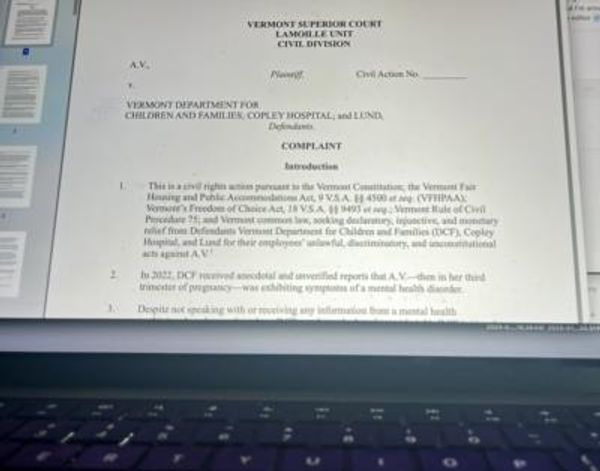
Silicon Valley Bank collapsed on Friday after a run on deposits drove the Northern California institution into insolvency, marking the largest bank failure since the financial crisis.
SVB’s stunning downfall, which threatens to upend the U.S. venture capital industry, is sparking fears that other small and regional banks could face similar pressure amid soaring interest rates and shrinking deposits.
“We are looking at this closure of SVB as a sign of extremely concerning industry conditions,” said Michele Alt, a former official at the Office of the Comptroller of the Currency, a national bank regulator, and a partner at the advisory firm Klaros Group. “It’s reminiscent of past crises. And what we're really focused on are banks with unrealized losses.”
Treasury Secretary Janet Yellen and other policymakers are on alert that problems at the institution — which had $209 billion in assets and counted more than half of Silicon Valley-backed startups and health-care businesses among its depositors — could spread.
Yellen told Congress that she was keeping a close eye on the bank's financial crunch shortly before the California Department of Financial Protection and Innovation announced it had taken possession of the institution Friday morning. The FDIC seized control of the bank’s assets, an unusual move suggesting that immediate action was necessary.
“There are recent developments that concern a few banks that I'm monitoring very carefully,” Yellen told lawmakers during a committee hearing. “When banks experience financial losses, it is and should be a matter of concern.”
After the bank’s collapse, she convened the three federal banking regulators to discuss the fallout.
“Secretary Yellen expressed full confidence in banking regulators to take appropriate actions in response and noted that the banking system remains resilient and regulators have effective tools to address this type of event,” Treasury said in a press release.
The collapse sent the overall stock market tumbling. Shares of other regional banks, including First Republic Bank, PacWest Bancorp, Western Alliance Bancorp and Signature Bank, were frozen late Thursday with growing concerns of broader risks to the sector.
Rep. Ro Khanna (D-Calif.), whose Silicon Valley district includes both the bank and many of the venture capital and startup clients, urged the White House and Treasury to do “whatever is legally permissible & appropriate to support the Bank which is central to the startup & tech economy,” he said in a tweet on Friday.
Silicon Valley Bank has been bleeding deposits as the Federal Reserve has aggressively raised borrowing costs to fight inflation. Higher interest rates bludgeoned many of the tech businesses that had deposited their money with the bank. As venture capitalists retreated from offering companies fresh infusions of capital to sustain their businesses, startups needed to burn through the cash in their accounts to stay afloat.
Deposits the bank had on hand have fallen steadily over the last several months, according to S&P Global Ratings. Higher rates also meant more investments offered an attractive yield, leading some clients to pull out their deposits and put them elsewhere.
In an effort to bolster its available cash, the firm sold off its securities portfolio and announced a stock offering, moves that contributed to panic about its financial health. Venture capitalists took to Twitter to alert businesses to start exploring alternative financing options, which contributed to the bank run that ultimately led to SVB’s demise.
SVB did not respond to a request for comment.
The bank's swift descent into receivership comes after the implosion of Silvergate Capital – another California financial institution that fell apart after its crypto-focused clientele pulled their funds.
When banks run into trouble, they can be forced to sell off investment assets, typically U.S. government debt and mortgage-backed securities, that they purchased to earn a return on their customers’ deposits. As interest rates climb, the price of those older securities fall — which means the banks sell those investments at a loss.
Despite the SVB’s high concentration of startup customers, markets aren’t “gonna view Silicon Valley Bank as contained to Silicon Valley,” Keith Noreika, a former acting Comptroller of the Currency and the executive vice president and chair of the banking supervision and regulation group at Patomak Global Partners, told POLITICO.
Regulators and bankers are hopeful that the factors leading to SVB’s failure are idiosyncratic and don’t signal imminent problems at other financial institutions. It’s rare for a larger bank to have customers so heavily concentrated in one sector, and more than 90 percent of those deposits were uninsured, according to its regulatory filings. (Deposit insurance is limited to $250,000 per person per bank.)
Nevertheless, that might not offer much immediate comfort to cash-strapped businesses that didn’t withdraw their funds from SVB during the panic earlier this week.
“There's some hope that the depositors will eventually get their money back if they're over the limit. But the problem is, they won't immediately get it back. And what kind of stress does that put on the depositors and the industries in the meantime?” Noreika said.
Jeremy White and Eleanor Mueller contributed to this story.







